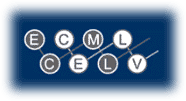
Mission Statements, Values and Aims
Frank Heyworth
"Say what you do"
![]()
Producing quality in any activity starts with a vision, a commitment,
a public statement.

Examples:
Mission Statements of the National Associations Represented in the Project
Other charters:
This public statement can take many forms - national curricula, mission statements, charters etc. What they all have in common is the recognition that it is impossible to have systems and procedures for quality unless everyone knows what they are.
Both public and private sector institutions have sought to communicate their standards through public statements of their educational principles and of the promises they make to their clients. The public statement can be made in many forms and at many levels - of national curricula, for example, or in school prospectuses. It is, however, an essential part of quality assurance that there should be some visible statement
Transparency and coherence are essential features of setting standards.
At the level of a national curriculum, this will mean that clear statements
of the "purpose and content" of language education, together
with the ways in which it is to be organised must be available and communicated.
This means that decisions must be taken on what languages are to be taught
in schools, at what age and with what aims. The level of attainment required
to pass from one part of the school system to the next must be defined
as must the means for assessment of this. In order to ensure that these
decisions are taken in a reasoned way, it will be necessary to have systems
for taking account both of parents' wishes, of the needs of society and
of educational and linguistic experts. It will also be necessary to define
feasible objectives and to avoid unrealistic expectations.
In language teaching this will mean that curricula should not only exist but that they should be made available to learners and teachers and complemented by syllabi, schemes of work, weekly plans etc. Clear and understandable level descriptors provide a necessary framework for setting objectives and measuring progress. The Common European Scale of Reference of the Framework is a means of linking the levels defined by one particular institution or system to a rigorously drafted scale expressed in terms of "real world" communicative competence.
Members of the Association uphold the following Student Charter:
All schools guarantee:
- high teaching and educational standards
- professional conduct and integrity
- regular independent inspections to maintain standards
- total accuracy and veracity of all information and publicity
- efficient administration and auxiliary services
suitable premises and facilities for language learning.
accurate placement-testing to determine language competence - a structured course of studies that is divided into levels and appropriate
to students' needs
appropriate and effective teaching methods
appropriate, regular assessments, reports and end-of-course assessment procedures leading to a certificate of attainment
experienced and competent teachers working under the supervision of an appropriately qualified academic manager
regular observation of the teaching activity
opportunities for obtaining information and advice about the course of studies
| By a charter or guarantee | |
| In a published school programme or plan | |
| In the curriculum | |
| None of these |
Do you think that the promises in the student charter above are
appropriate for your
teaching environment? What would you add or take away? ![]()
For other charters and quality statements, see links.
